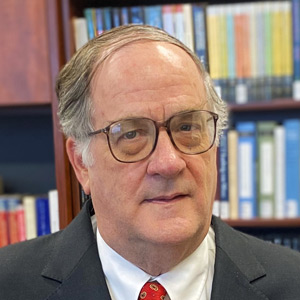Several states, including California, Maryland, and New York, have a new vision for public schools: as one-stop centers for medical and social services, not only for students but for their families as well. The transformed schools are called “community schools,” or “full-service schools.”
California officials are so enamored with the idea that they committed $4 billion to the effort.
The push for these reimagined schools—by community organizers, health care and mental-health providers, teacher unions, and youth-services organizations—began during the early 1990s in New York City, Philadelphia, and Indianapolis. How such schools are turning out in California should serve as a cautionary tale.
Millions of Californians have recently seen or heard TV and radio ads from the California Teachers Association praising and promoting community schools. The ads celebrate: “Happy kids. Happy teachers. Happy parents. Collaboration.” But behind the happy talk is a more-sobering—some might say baleful—reality: a clever new effort to use the public’s long-time attachment to public education to expand welfare-state services, promote critical race theory, and change school governance from oversight by elected school boards to rule by teachers’ unions and select community members.
Advocates, citing psychologist Urie Bronfenbrenner’s “ecological systems” theory—which stresses the influence of external economic and political structures on children’s development—argue that locating social-service and other agencies in the schools will help boost learning. But, in fact, there’s little evidence to support claims that it improves academic achievement.
Will Dobbie and Roland G. Fryer of Harvard found that when students at a charter school do well academically, wraparound social services are not the explanation. Such charter-school success, they write, is “unlikely” to be caused “either directly or indirectly” by such services. There is “likely little to no effect” on achievement test results from combined “community and student-family programs.”
A study by the RAND Corporation found somewhat mixed results: nearly zero improvement in English across three years and nearly zero gains in math during the first two years that were looked at but an uptick during the last year .
These dubious academic results are quite expensive. Salaries and benefits of medical clinicians and social workers must be added to teachers’ salaries and benefits.
Yet California speeds ahead, with $1.4 billion of the $4 billion the legislature committed to community schools already allocated to several school districts, including Los Angeles, Oakland, San Diego, and San Francisco.
In January 2022 the California State Board of Education added a “Community Schools Framework” overlay to the state’s community-schools law. The framework makes a commitment to “shared decision-making [in] all aspects of school governance and operation [including] curriculum and services.” In plain English, this is a direct transfer of power to teachers’ unions. They are using this power to hire ideologically aligned groups to offer school programs and to design classroom curriculum infused with divisive critical-race and liberation theory, and to avoid heated public board meetings and reluctant school boards and principals.
Leaders of the California Teachers Association are clear about what they intend. They don’t just want a new advisory body. During an April 2023 internal briefing for local leaders, the union disclosed that it wants to replace local school boards with a permanent “shared decision-making” governing structure in schools.
This spring the San Diego Educators Association got the school board’s nod for shared decision-making on each school’s campus “specifically around culturally-sustaining and community-based curriculum.” United Teachers of Los Angeles (UTLA) tentative agreement expands its power. The union gets to name 50 percent of the members of the “local school leadership councils” that control community schools, with “the UTLA chapter chair” automatically getting a seat and the remaining union picks “elected by the certified bargaining unit employees.” This change contractually sidelines principals’ decision-making on the ethnic-studies curriculum and in-service training hires. In Oakland Unified’s May 2023 bargaining agreement, the community schools committees act as the “shared district-level decision-making body” as well. Ditto San Francisco Unified’s tentative agreement.
The State Board of Education’s Community Schools Framework also requires schools to make commitments that echo critical race theory. One is to commit to schools that have “racially just and restorative school climates,” which means adopting race-based, non-punitive student-discipline policies. Another is to provide “culturally proficient and relevant instruction,” such as lessons on “power and cultural, racial-ethnic, and linguistic oppression,” as San Diego Unified School District said it will do in its Community School grant application, which has thus far earned it $39.2 million in state grants.
These services will be delivered to San Diego Unified students, its school board was informed, by “culturally responsive” groups like Association of Raza Educators (ARE), a socialist activist group whose members—united in “the struggle for Raza liberation”—fight for “self-determination of oppressed nations.” ARE’s members, when not hosting meetings under the slogan “capitalism is the virus,” work at “organizing and mobilizing teachers, developing critical anti-racist liberation curriculum, and working with community organizations to ignite change.” The association’s 2021 teacher training in ethnic studies was designed for “social justice” teachers who want to combine political organizing within Latino communities with teaching a “culturally relevant curriculum” that uses a “critical pedagogy lens.” An association flyer from 2020 features a graphic of Karl Marx saying, “Teachers of the World Unite, You Have Nothing to Lose But Your Chains.”
The California Department of Education gave San Francisco and Oakland Unified $132 million in combined grants to partner directly with groups like the “culturally responsive” Arab Resource and Organizing Center (AROC), an anti-Israel activist group that fights “racial capitalism” on the side.
In both Oakland and San Francisco, we find as ethnic studies consultants Community Responsive Education, which offers “equity audits” and “trauma-informed” instruction, and in San Diego and Los Angeles we find the Liberated Ethnic Studies Model Curriculum Consortium. Both organizations promote “liberated” ethnic studies content, including anti-Israel content. The term “liberated” ethnic studies means a curriculum designed to raise students’ “critical consciousness” of their oppression, akin to or taken from the early California model curriculum that was so overtly steeped in critical-race and liberation theory that it was even too radical for Gov. Gavin Newsom and the state board of education.
Stanley Kurtz gives an example from New York City of what parents and taxpayers around the country can look forward to as community schools spread. When Bill de Blasio was mayor, “Truth High School” was a “radical community organizer’s dream.” Students were pushed to enlist in the local “Community Justice Collective,” join in its political efforts, then collaborate with teachers to form a curriculum that reinforced social-justice views. In class, Kurtz points out, “students were encouraged to challenge the dominant narratives of white supremacy such as the myths of meritocracy and the American Dream.”
The national Coalition for Community Schools, which unsurprisingly also supports shared decision-making, has set a national goal of 25,000 community schools for 10 million students and their families by 2025. To help with this, President Biden’s 2024 budget proposes to add $368 million to the $150 million Congress gave community schools last year to cover the costs of partnering with “community-based organizations and other entities,” a 12-fold increase from the federal government’s $30 million community-school seed funding just two short years ago.
Even if community schools noticeably improved academic performance—and there’s no compelling evidence that they do or will in the future—they shouldn’t be taxpayer-financed vehicles for political activism and propaganda pushed on a captive student audience.
If teachers want to run schools, they should not have power without responsibility. Let them own and operate their own schools—with no direct subsidies from taxpayers. Let those schools be financed instead by tuition and opportunity scholarships.
When it comes to ethnic studies, why not have a historically accurate, balanced curriculum that includes the opportunities available under free-enterprise capitalism in America? Let’s not have community schools serve as a Trojan Horse for indoctrination, in California or elsewhere.








